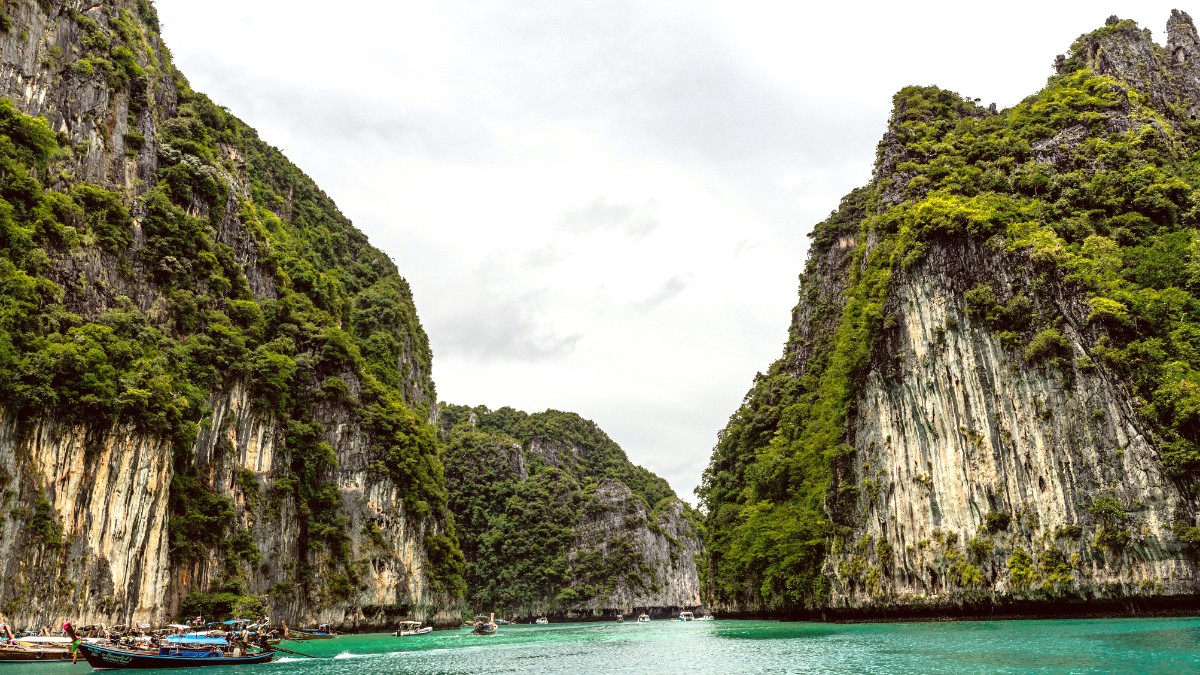
Andaman Coast, Thailand
Khao Lak’s cuisine is typical of Southern Thailand: spicy with abundant fresh seafood, coconut milk, turmeric, and potent herbs. Historical trade routes brought subtle influences, seen in dishes like Massaman Curry.
Common ingredients: coconut milk, galangal, lemongrass, kaffir lime leaves, chili, garlic, shallots, fresh turmeric. Flavor aims for spicy, sour, sweet, and salty with a creamy coconut finish.
Thai food is typically eaten with a spoon and fork. Use the fork to push food onto the spoon. Chopsticks are generally for noodle dishes.
Meals are often served family-style for sharing. Taste food before adding extra condiments. Try to finish food on your plate.
Do not stick chopsticks upright in a bowl of rice (resembles funeral incense). Do not point your feet at food or other people at the table.
World-famous spicy and sour soup with shrimp, lemongrass, galangal, kaffir lime leaves. Widely available.
A classic Thai comfort food.
Green curry with chicken or shrimp, a rich and spicy dish made with coconut milk and green chilies.
Aromatic and creamy.
Stir-fried rice noodles (Pad Thai) or fried rice (Khao Pad). Customizable and found everywhere.
Safe and comforting options.
Satay (grilled skewered meat), Roti (Thai pancake), Spring Rolls (fresh/fried), Mango Sticky Rice (seasonal dessert), Noodle Soups, Grilled Skewers.
Non-alcoholic: Fresh coconut water, Thai iced tea (Cha Yen), fruit shakes. Alcoholic: Local beers (Chang, Leo, Singha), Mekhong (Thai spirit), SangSom (Thai rum).
Luxury resorts feature high-end restaurants with refined Thai and international dishes in elegant settings.
Numerous mid-range restaurants in Bang La On and Bang Niang. Mix of traditional Thai and international cuisine.
Street food and local markets offer extensive and affordable selections, lively and authentic experiences.
Beyond Thai food, Khao Lak has international restaurants, including Italian, Indian, European, and some Japanese establishments.
Mainly found in the more developed Bang La On area.
From pizza and pasta to rich curries, a wide array of flavors are available to suit different palates.
Hotels and resorts often feature their own international menus.
Often served in a coconut shell with toppings.
Examples banana fritters.
Desserts flavored with pandan or black beans.
Mango Sticky Rice is a seasonal treat (April-June).
Dining with severe allergies can be challenging. Many Thai sauces contain wheat/gluten. Fish sauce is naturally gluten-free.
Communicate needs clearly. Consider carrying a Thai Translation card.
"Phom/Chan pae..." (I am allergic to...), "Mai sai..." (Don't put...).
HappyCow app (vegan/vegetarian restaurants). Google Translate app (image translation for menus).
Several resorts and independent operators offer Thai cooking classes. These often involve a local market visit to source ingredients.
Enjoying beachfront dining during sunset is a quintessential Khao Lak experience.
Several resorts and independent operators offer Thai cooking classes.
Tour operators may offer visits to local fruit orchards, rubber plantations, or cashew nut factories.
Local food events might occur around specific holidays or temple fairs.
Often served in a coconut shell with various toppings. A refreshing treat in the tropical climate.
A local favorite for cooling down.
A seasonal dessert featuring fresh, ripe mango slices served with sweet sticky rice and a drizzle of coconut milk.
Best enjoyed during mango season (April-June).
Khao Lak's coastal location highlights fresh seafood dishes, from grilled catches to curries.
The cuisine here is known for its distinctive spiciness and use of local herbs like turmeric.
Enjoy refreshing Thai iced tea, fresh coconut water, or local beers.
When dining out, observing where locals eat can often point you to the best and most authentic food, especially for street food stalls and smaller restaurants.